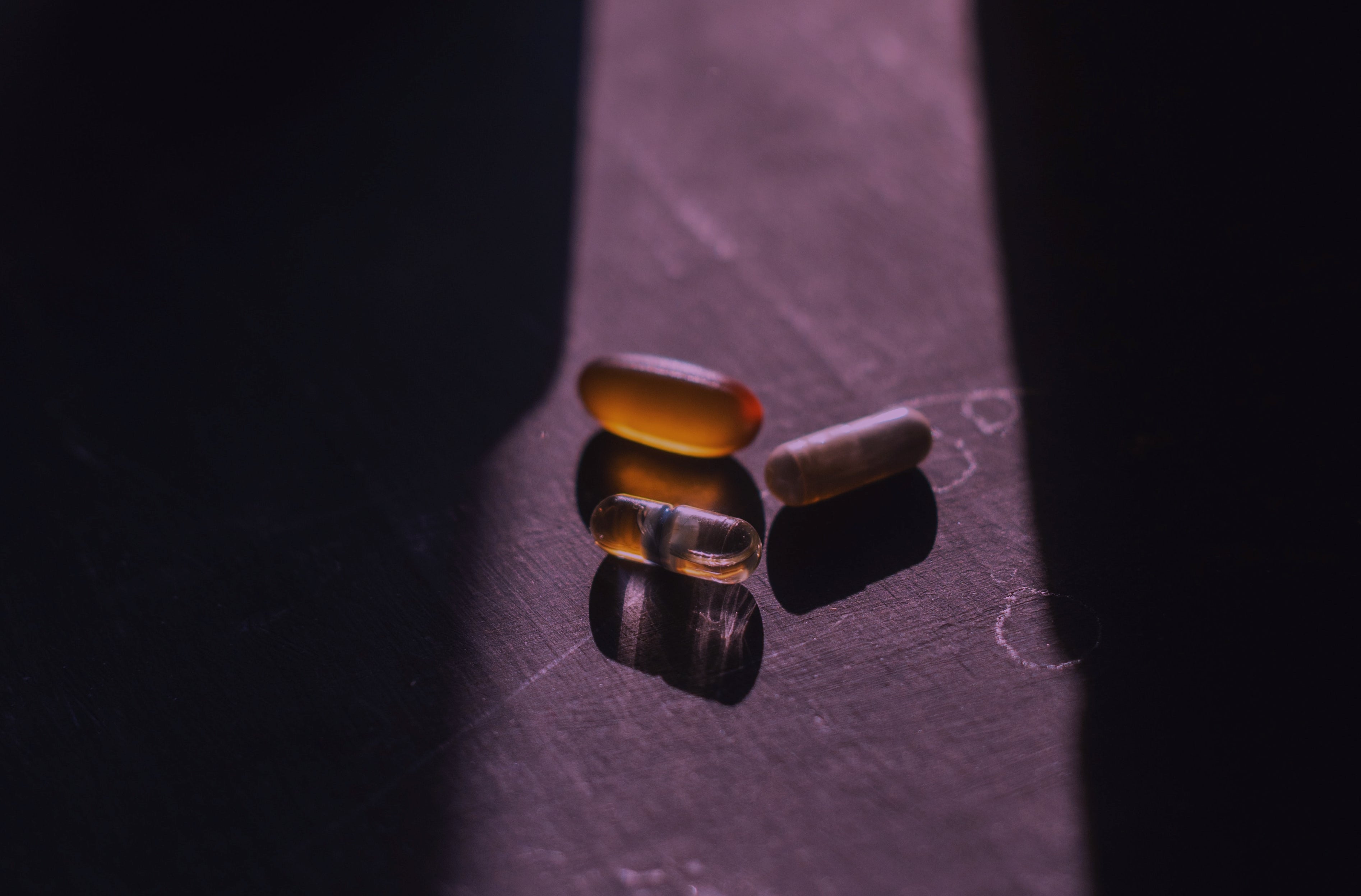Check the label: Does your prenatal vitamin contain synthetic “choline bitartrate”? If it does, toss it.
A groundbreaking clinical trial published in April 2021 in the American Journal of Medicine sheds light on a potentially dangerous difference between synthetic, supplemental choline and naturally occurring choline found in foods.
When a group of MD and PhD researchers gave a common synthetic form of choline, called choline bitartrate to patients, levels of an alarming chemical byproduct, called trimethylamine-N-oxide, or TMAO, were found to significantly rise.1 TMAO levels are associated with blood clots, heart disease, and complications in pregnancy.2,3,4,5
Food-forms of choline, including eggs and phosphatidylcholine (found in nuts, seeds, etc), did not alter TMAO levels.
The choline bitartrate-TMAO connection was so strong that the study authors, a group of MDs and PhDs, recommended supplementation with choline bitartrate be halted in exchange for food forms of choline only.
Synthetic vs. food nutrients: not created equal
To compare the effect of food forms of dietary choline with supplemental choline bitartrate, scientists administered eggs (a natural source of choline), phosphatidylcholine supplements (a second, food form of choline found in eggs, nuts, and seeds), and synthetic choline bitartrate to participants.
The results? A large spike in TMAO levels in the blood and urine when administering one of the most popular synthetic forms of choline – choline bitartrate – but not when administering choline in 2 different food forms.1

Additionally, synthetic choline bitartrate also alarmingly raised levels of platelet aggregation, or platelet stickiness. Platelets are components of our blood that naturally lead to clotting, which is good in the case of an injury. However, rising TMAO levels have been shown to promote platelets becoming too sticky, leading to blood clots, restricted blood flow, and artery plaque formation.2
Clots are especially unwanted throughout pregnancy, as compounds like TMAO have a documented ability to limit blood flow to rapidly dividing tissues, examples of which include the placenta or a fetus.
Further, several studies in pregnant women demonstrate that TMAO can increase the risk for preeclampsia and gestational diabetes, and even increase the risk of heart disease in offspring.3,4,5
Choline sounds important. What is it, again?
Choline is both a critical compound in cell membranes and plays a central role in baby’s brain development and growth.6,7,8,9 Unfortunately, more than 90% of women in the US are deficient in recommended levels of choline, currently set at 450mg/day in pregnancy and 550mg/day during lactation.
Choline also supports the liver and placenta.9 Choline deficiency increases the risk for preeclampsia, a dangerous condition characterized by rapidly increasing blood pressure and risk of organ damage to the mother.10 Further, choline deficiency increases the risk for premature delivery, low birth weight, neural tube defects, and stillbirth.11,12
During pregnancy, a mother delivers a large amount of her own choline to the fetus through the placenta and, after delivery through breastmilk, resulting in an increased requirement for choline during these critical stages. Sufficient choline in pregnancy has been shown to protect a baby’s developing brain and boost baby’s IQ while reducing the risk of pregnancy-related complications.10,13 Further studies show that choline supplementation increases offspring’s memory and cognitive function.14
Meeting choline needs in pregnancy can be difficult to achieve through diet alone. With more than 90% of pregnant women deficient in choline,15 more and more prenatal vitamins have started including synthetic choline in their formulations. But the best science continues to show, time and time again, that synthetic and natural nutrient forms are not created equal.
If choline bitartrate is so bad, why does my prenatal vitamin include it?
Like many synthetic nutrients, choline bitartrate is made in a lab and hasn’t been well-studied in pregnancy. Choline bitartrate also has an extremely economical cost of production and high solubility in a variety of mediums. It’s cheap. It dissolves. It can be counted as “choline” on the label.
In an effort to make synthetic forms of vitamins more appealing to customers, prenatal vitamin manufacturers have even begun calling choline bitartrate “Food-form” choline and even “Nature-identical” choline. These labels simply are not true.
Natural, food-form choline is structurally different from synthetic choline and is usually found within a larger molecule called phosphatidylcholine. Natural choline has an inherently large molecular size and is more expensive than choline bitartrate, since it comes from food that is grown over long periods of time, making it less practical and cost-prohibitive for synthetic prenatal formulators.
Eggs, nuts, and seeds contain most of their choline as phosphatidylcholine. And phosphatidylcholine from foods and supplements does not raise TMAO levels. Only choline bitartrate does.1
It’s time to skip the synthetics. It’s time to demand more.
Natural Choline. Honest, safe, effective.
The choline found in Tend prenatal comes from the lipid, or fat, portion of sunflower seeds, as naturally occurring phosphatidylcholine. This is the healthy, safe, and naturally-occurring form of choline, the same form used in the American Journal of Medicine study that did not show an increase in TMAO levels.1
Tend exists to provide women with a delicious prenatal made of ingredients completely derived from foods, at levels to support and maximize infant development and support a mother’s increasing nutrient needs throughout pregnancy.
Thoughts, questions? We’d love to hear what you think!
Follow us @tendprenatal, or reach out at hello@tendprenatal.com.
Studies Cited
- Dietary Choline Supplements, but Not Eggs, Raise Fasting TMAO Levels in Participants with Normal Renal Function: A Randomized Clinical Trial. Wilcox J, Skye SM, Graham B, Zabell A, Li XS, Li L, Shelkay S, Fu X, Neale S, O'Laughlin C, Peterson K, Hazen SL, Tang WHW. Am J Med. 2021 Apr 17;S0002-9343(21)00229-1.
- Gut Microbiota and Ischemic Stroke: The Role of Trimethylamine N-Oxide. Nam HS. J Stroke. 2019 May;21(2):151-159.
- Gut Microbiota Dysbiosis and Increased Plasma LPS and TMAO Levels in Patients With Preeclampsia. Wang J, Gu X, Yang J, Wei Y, Zhao Y. Front Cell Infect Microbiol. 2019 Dec 3;9:409.
- Trimethylamine N-Oxide Metabolites in Early Pregnancy and Risk of Gestational Diabetes: A Nested Case-Control Study. Huo X, Li J, Cao YF, Li SN, Shao P, Leng J, Li W, Liu J, Yang K, Ma RCW, Hu G, Fang ZZ, Yang X. J Clin Endocrinol Metab. 2019 Nov 1;104(11):5529-5539.
- Perinatal Hypercholesterolemia Exacerbates Atherosclerosis Lesions in Offspring by Altering Metabolism of Trimethylamine-N-Oxide and Bile Acids. Trenteseaux C, Gaston AT, Aguesse A, Poupeau G, de Coppet P, Andriantsitohaina R, Laschet J, Amarger V, Krempf M, Nobecourt-Dupuy E, Ouguerram K.Arterioscler Thromb Vasc Biol. 2017 Nov;37(11):2053-2063.
- Choline. In: Erdman JW, Macdonald IA, Zeisel SH, eds. Present Knowledge in Nutrition. 10th ed. Washington, DC: Wiley-Blackwell; 2012:405-18.
- Institute of Medicine. Food and Nutrition Board. Dietary Reference Intakes: Thiamin, Riboflavin, Niacin, Vitamin B6, Folate, Vitamin B12, Pantothenic Acid, Biotin, and Choline. Washington, DC: National Academy Press; 1998.
- Choline. In: Ross AC, Caballero B, Cousins RJ, Tucker KL, Ziegler TR, eds. Modern Nutrition in Health and Disease. 11th ed. Baltimore, MD: Lippincott Williams & Wilkins; 2014:416-26.
- Nutrition in pregnancy: the argument for including a source of choline. Zeisel SH. Int J Womens Health. 2013;5:193-199.
- Homocysteine and folate concentrations in early pregnancy and the risk of adverse pregnancy outcomes: the Generation R Study. Bergen NE, Jaddoe VW, Timmermans S, et al. BJOG. 2012;119(6):739-751.
- Maternal homocysteine and small-for-gestational-age offspring: systematic review and meta-analysis. Hogeveen M, Blom HJ, den Heijer M. Am J Clin Nutr. 2012;95(1):130-136.
- Plasma total homocysteine, pregnancy complications, and adverse pregnancy outcomes: the Hordaland Homocysteine study. Vollset SE, Refsum H, Irgens LM, et al. Am J Clin Nutr. 2000;71(4):962-968.
- Periconceptional dietary intake of choline and betaine and neural tube defects in offspring.Shaw GM, Carmichael SL, Yang W, Selvin S, Schaffer DM. Am J Epidemiol. 2004;160(2):102-109.
- An overview of evidence for a causal relationship between dietary availability of choline during development and cognitive function in offspring. McCann JC, Hudes M, Ames BN. Neurosci Biobehav Rev. 2006;30(5):696-712.
- Racial/ethnic and sociodemographic factors associated with micronutrient intakes and inadequacies among pregnant women in an urban US population. Brunst KJ, Wright RO, DiGioia K, Enlow MB, Fernandez H, Wright RJ, et al. Public Health Nutr 2014;17:1960-70.



